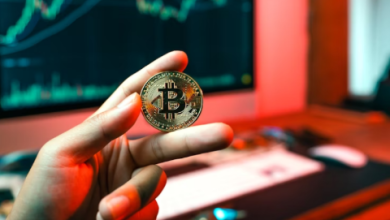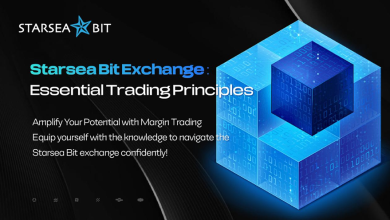Crypto Swap A Comprehensive Guide to Understanding and Using Crypto Swaps

Cryptocurrency has revolutionized the financial world, offering a new way to trade, invest, and transfer value. One of the most innovative aspects of this digital ecosystem is the ability to perform “crypto swaps.” If you’re new to the concept, or even if you have some experience with cryptocurrencies but want to dive deeper into crypto swap this guide will provide a comprehensive overview of what crypto swaps are, how they work, and why they matter.
What Is a Crypto Swap?
A crypto swap refers to the process of exchanging one cryptocurrency for another directly, without needing to convert it into fiat currency first. This can be done on various platforms, including centralized exchanges, decentralized exchanges (DEXs), and specialized swapping services. The primary advantage of a crypto swap is the ability to exchange digital assets quickly and with minimal fees, often within the same platform or ecosystem.
Centralized vs. Decentralized Crypto Swaps
The process of swapping cryptocurrencies can occur in both centralized and decentralized environments:
- Centralized Crypto Swaps: Centralized exchanges (CEXs) like Binance, Coinbase, and Kraken offer crypto swap services. These exchanges act as intermediaries, matching buyers and sellers, and typically charge a fee for their services. Centralized swaps are often faster and more user-friendly, but they require users to trust the exchange with their funds.
- Decentralized Crypto Swaps: Decentralized exchanges (DEXs) like Uniswap, SushiSwap, and PancakeSwap allow users to swap cryptocurrencies directly with each other without a central authority. These swaps are powered by smart contracts, which automatically execute the exchange based on predefined conditions. DEXs offer greater privacy and control over funds, but they may have lower liquidity and slower transaction times compared to centralized options.
How Does a Crypto Swap Work?
The process of a crypto swap can vary depending on the platform and type of exchange, but the general steps are as follows:
Selecting the Cryptocurrencies
The first step in a crypto swap is choosing the cryptocurrencies you want to exchange. For example, you might want to swap Bitcoin (BTC) for Ethereum (ETH). Most platforms will offer a wide range of trading pairs, allowing you to swap between various digital assets.
Inputting the Swap Details
Once you’ve selected the cryptocurrencies, you’ll need to input the amount you want to swap. The platform will typically display the current exchange rate, the estimated amount you’ll receive, and any associated fees.
Review and Confirm the Swap
Before completing the swap, it’s essential to review all the details carefully. Make sure the exchange rate, fees, and amount are correct. Once you’re satisfied, you can confirm the swap. On centralized exchanges, this will involve submitting the order, while on decentralized platforms, it might require confirming the transaction through your cryptocurrency wallet.
Execution of the Swap
After confirmation, the platform will execute the swap. On centralized exchanges, this might happen almost instantly, as the platform matches your order with another user’s order. On decentralized exchanges, the swap will be processed by the underlying smart contract, which might take a bit longer depending on network congestion.
Receiving the Swapped Cryptocurrency
Once the swap is complete, you’ll receive the new cryptocurrency in your account or wallet. The time it takes for the transaction to finalize can vary, but it usually occurs within minutes.
Why Use Crypto Swaps?
Crypto swaps offer several advantages that make them an attractive option for traders and investors:
Speed and Efficiency
One of the main benefits of crypto swaps is the speed at which transactions can be completed. Instead of going through multiple steps, such as selling a cryptocurrency for fiat and then buying another, swaps allow you to exchange assets directly. This efficiency can be particularly valuable in a fast-moving market where prices can change rapidly.
Lower Fees
Crypto swaps often come with lower fees compared to traditional trading methods. Since the process involves fewer steps and doesn’t require conversion to fiat currency, transaction fees are generally reduced. This can make swaps a cost-effective option for traders, especially for frequent transactions.
Accessibility
Swapping cryptocurrencies is a straightforward process that can be done by anyone with access to a trading platform or DEX. This accessibility is particularly beneficial for those who may not have access to traditional financial systems or who prefer to manage their own assets without relying on third parties.
Portfolio Diversification
Crypto swaps allow investors to diversify their portfolios easily. By swapping one cryptocurrency for another, you can quickly adjust your holdings based on market conditions or investment strategies. For example, if you believe Ethereum has more growth potential than Bitcoin, you can swap some of your Bitcoin holdings for Ethereum.
Decentralization and Privacy
For those who value privacy and control over their assets, decentralized crypto swaps offer a compelling option. Since DEXs operate without a central authority, users retain control of their private keys and funds throughout the process. Additionally, many DEXs do not require users to provide personal information, offering a higher level of privacy compared to centralized exchanges.
Risks Associated with Crypto Swaps
While crypto swaps offer many benefits, it’s essential to be aware of the risks involved:
Price Slippage
Price slippage occurs when the price of the cryptocurrency changes between the time you initiate the swap and when it is executed. This can lead to receiving less of the new cryptocurrency than expected. Slippage is more common on DEXs with lower liquidity, where large orders can significantly impact the price.
Smart Contract Risks
For decentralized crypto swaps, the process relies on smart contracts to execute the trade. While smart contracts are generally secure, they are not immune to bugs or vulnerabilities. If a smart contract is poorly written or exploited by hackers, it could result in a loss of funds.
Exchange Risk
When using centralized exchanges, you are trusting the platform with your funds during the swap process. If the exchange is hacked, goes bankrupt, or engages in fraudulent activities, you could lose your assets. It’s crucial to use reputable exchanges with strong security measures in place.
Regulatory Risks
The regulatory environment for cryptocurrencies is still evolving, and changes in laws or regulations could impact the ability to perform crypto swaps. For example, certain jurisdictions may impose restrictions or taxes on cryptocurrency transactions, affecting the cost and legality of swaps.
Liquidity Issues
Low liquidity can be a significant issue on some DEXs, particularly for less popular trading pairs. This can result in higher slippage, longer transaction times, and difficulty executing large orders. It’s important to assess the liquidity of the trading pair before initiating a swap.
Popular Platforms for Crypto Swaps
There are many platforms available for performing crypto swaps, each with its unique features and advantages. Here are some of the most popular options:
Uniswap
Uniswap is one of the leading decentralized exchanges, allowing users to swap Ethereum-based tokens directly from their wallets. It uses an automated market maker (AMM) system to provide liquidity and execute trades without the need for a central order book.
PancakeSwap
PancakeSwap is a DEX built on the Binance Smart Chain, offering fast and low-cost swaps for a wide range of tokens. It’s similar to Uniswap but focuses on assets within the Binance ecosystem.
SushiSwap
SushiSwap is another popular DEX that operates on the Ethereum blockchain. It started as a fork of Uniswap but has since developed its unique features, including yield farming and staking opportunities.
1inch
1inch is a decentralized exchange aggregator that finds the best prices for swaps across multiple DEXs. By splitting orders across different platforms, 1inch minimizes slippage and maximizes returns for users.
Changelly
Changelly is a centralized platform that offers instant crypto swaps with competitive exchange rates. It supports a wide range of cryptocurrencies and allows users to swap assets without needing to create an account.
How to Perform a Crypto Swap on a Decentralized Exchange
To illustrate how a crypto swap works, here’s a step-by-step guide to performing a swap on a decentralized exchange like Uniswap:
Connect Your Wallet
First, you’ll need to connect your cryptocurrency wallet to the DEX. Popular wallets like MetaMask or Trust Wallet can be easily integrated with platforms like Uniswap. Once connected, you’ll be able to access your funds and initiate swaps.
Select the Tokens for the Swap
Choose the tokens you want to swap. For example, you might want to swap Ethereum (ETH) for a stablecoin like USDC. Enter the amount of the token you want to swap.
Review the Exchange Rate and Fees
The platform will automatically calculate the exchange rate and display the amount of the new token you’ll receive. It will also show any associated fees, including network fees (gas fees) for processing the transaction.
Confirm the Swap
Review the details carefully to ensure everything is correct. Once you’re satisfied, confirm the swap. If you’re using MetaMask or another wallet, you’ll need to approve the transaction in your wallet.
Wait for Confirmation
After confirming the swap, the transaction will be submitted to the blockchain. Depending on network congestion, it may take a few minutes to process. Once confirmed, the new tokens will appear in your wallet.
Conclusion
Crypto swaps offer a fast, efficient, and often cost-effective way to exchange digital assets. Whether you’re looking to diversify your portfolio, capitalize on market opportunities, or simply explore the world of decentralized finance (DeFi), understanding how crypto swap work is essential. While there are risks involved, being informed and choosing the right platform can help you navigate these challenges and makes.








